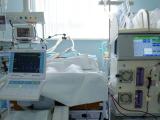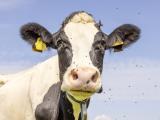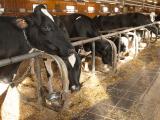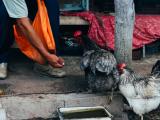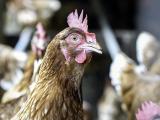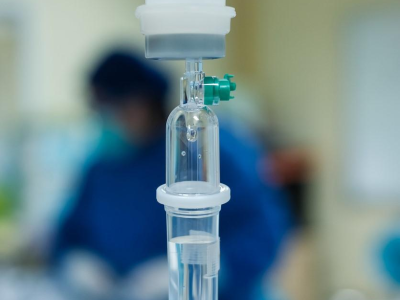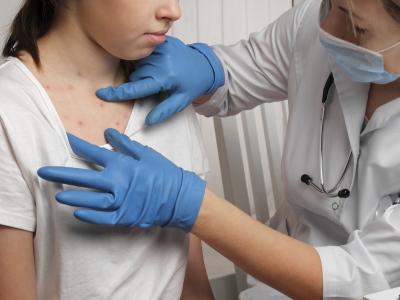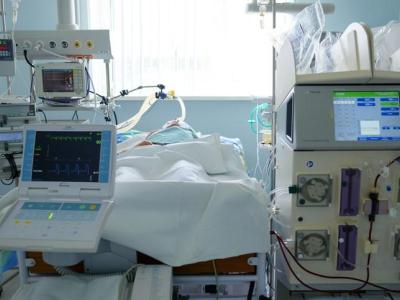Against the backdrop of four new H7N9 influenza illnesses reported from China today, a detailed look at the second wave of the outbreak reveals that cases are trending slightly younger, with a lower case fatality rate (CFR), though severe pneumonia is still one of the disease's hallmarks.
So far more than 80 new cases—the large majority from the first of the year—have been reported in the outbreak's second spike that began in October. Over the past few weeks China has often reported five to seven new cases each day, equaling the pace seen during last spring's first-wave peak.
Cases trending younger, less deadly?
World Health Organization (WHO) experts said today in their latest risk assessment that most cases in the first wave involved middle-aged or older men, but the age distribution in the new wave isn't as skewed toward older age-groups. The mean age in the new surge of cases is slightly lower than the first wave: 52 years compared with 58 years.
H7N9 is still striking males more frequently than females, and the CFR is not as high as the outbreak's first wave, the WHO said. It cautioned, however, that CFR patterns need to be monitored closely, because many of the recently infected patients are still hospitalized. Some milder cases have been reported, but it's clear that H7N9 infections are marked by rapidly progressing severe pneumonia, according to the risk assessment.
Lab analysis of H7N9 samples from patients, animals, and the environment collected during the second wave shows that the hemagglutinin (HA) and neuraminidase (NA) genes are similar to viruses from the first wave, the report said. It added that they are also similar to the influenza A/Anhui/1/2013 strain recommended for H7N9 vaccine development.
Tests on a subset of recent viruses to monitor for antiviral resistance have identified no markers linked to resistance to neuraminidase inhibitors, including oseltamivir (Tamiflu) and zanamivir (Relenza).
Resistance to frontline treatments such as oseltamivir and zanamivir has been a worry since the outbreak's early days, when an NA resistance marker was found in one of the first three lab-confirmed H7N9 cases. The resistant viruses have also been linked to treatment failures in some severely ill patients.
Several questions remain about the source of human infections, though most of the evidence points to exposure to infected live poultry and their contaminated environments, the WHO said. It added that most patients who were sickened by H7N9 were exposed to birds or live-poultry markets, that H7N9 viruses from humans are genetically similar to ones collected from birds and the environment, and that live-poultry markets linked to human infections are more likely to yield positive H7N9 samples.
The WHO's analysis found no increase in the number of illness clusters, including healthcare-associated ones, that would point to any increased risk of human-to-human transmission. It said an investigation into a recent infection in one health worker, presumably that of a 31-year-old doctor from Shanghai whose H7N9 death was reported this week, found that the patient may have been exposed to poultry or a contaminated environment. So far no other H7N9 cases linked to the patient have been identified.
Though the virus doesn't seem to transmit easily among humans, the detection of several less severe cases during flulike illness surveillance, along with continuing severe cases, shows that continued vigilance is needed, the WHO said. Overall, the public health risk hasn't changed from the WHO's last assessment in December.
More sporadic H7N9 cases are expected to be reported in humans, especially with increases in poultry production, trade, and transport in advance of China's Lunar New Year holiday season and because H7N9 seems to be following a more active winter seasonal pattern seen with other avian influenza viruses, the WHO said. Travel-associated cases could occur, but the agency said the threat of international spread is low, unless the virus adapts for more efficient human-to-human transmission.
China reports four more cases
The four new case-patients from China include a 71-year-old man from Jiangsu province whose illness was reported late yesterday and three from Zhejiang province: a 53-year-old man, a 71-year-old man, and a 63-year-old woman.
According to a translation of a provincial health ministry report posted by the Avian Flu Diary infectious disease news blog, the patients from Zhejiang province are all hospitalized in critical condition. A statement from Hong Kong's Centre for Health Protection (CHP) said the patient from Jiangsu province is also hospitalized.
The new cases boost the outbreak total to 220, according to a running tally updated each day with patients' details by the FluTrackers infectious disease message board. The group's total includes the case of an asymptomatic child that's not included in WHO totals. The unofficial number of deaths is 57.
In a related development today, the WHO released more details about five more lab-confirmed cases it received from China on Jan 20. Hong Kong's CHP had announced only basic information about the cases on Jan 20.
The patients include two people from Shanghai who died from their infections, the 31-year-old male doctor noted above and a 77-year-old man, as well as three patients from Zhejiang province, all who are hospitalized. They are a 55-year-old man, a 71-year-old woman, and a 63-year-old man. One is in serious and two in critical condition. All had been exposed to poultry before they got sick.
Poultry and environmental H7N9 findings
The WHO's Western Pacific Region office (WPRO) today released a situation update, noting that continued vigilance is needed as case numbers rise, given the Lunar New Year activities and the unpredictable nature of flu viruses.
It also includes the results from China's agriculture ministry on the latest H7N9 tests in birds and their environments from two of the outbreak's hot spots: Guangdong and Zhejiang provinces.
In Zhejiang province, tests of 18 of 200 samples from three agricultural products markets and a wholesale market were positive for the H7N9 virus. Serologic testing of 85 samples yielded 7 positives.
In Guangdong province, testing at 151 sites found only 2 positives from two agricultural markets. Serologic testing of 2,192 samples in Guangdong found no positive specimens. The report also mentions positive tests reported earlier this month from a restaurant and live markets in Guangdong province.
See also:
Jan 21 WHO H7N9 risk assessment
Jan 22 Avian Flu Diary post
Jan 22 WHO statement
Jan 22 WHO WPRO situation update
FluTrackers H7N9 human case list


